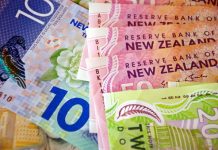Markets
Yesterday morning it looked that EMU/German yields would catch up in the wake of the recent strong rise in US yields. The German 10-y yield moved temporarily into positive temporary for the first time since April 2019. However, the there was no immediate follow-through price action and/or high profile news to sustain further gains. The move petered out.
The strong uptrend in US yields also ran into resistance. At the end of the day, the US yield curve flattened. The 2y- yield still rose 1.5 bps, but longer maturities eased with the 30-y declining 1.2 bps. A 20-y US bond sale met decent interest, but a dip in yields at longer maturities was partially reversed later in the session.
The combination of geopolitical risk, persistent high oil prices (Brent testing $89 p/b) and a risk-off sentiment was a mixed bag for core bonds. President Biden also highlighted that inflation is becoming a political issue/priority ‘guiding’ the Fed to recalibrate its policy support.
US equities again underperformed with the Dow & S&P losing slightly less than 1.0%. The Nasdaq lost 1.15%. The index trades more than 10% off the all-time top (correction territory).
German bonds underperformed with the 2-y unchanged but the 30-y rising (1.4 bps).
The dollar met resistance after Tuesday’s sharp rebound. DXY corrected to the 95.50 area. EUR/USD closed slightly higher at 1.134. USD/JPY followed the broader dollar setback (114.3 from 114.6).
Sterling still wasn’t affected by persistent turmoil in the UK government as higher than expected December inflation cemented markets’ expectations for a February BoE rate hike. BoE’s Bailey in a hearing also warned on the risk for more persistent inflation. EUR/GBP touched a minor correction low intra-day, but closed little changed at 0.833.
This morning, risk sentiment in Asia turns for the better. Chinese markets are drawing comfort as banks reduce borrowing costs, passing through recent PBOC policy easing, with more expected to come. Asian equities are rebounding up to 2.9% (Hang Seng). The Nikkei gains 1.1%. PBOC policy easing still fails to weaken the yuan. At USD/CNY 6.3445, the Chinese currency is holding near strongest levels since May 2018.
Later today, US jobless claims and the Philly Fed Business outlook deserve attention. The Central bank of Turkey and the Norges Bank are both expected to keep rates on hold, at least for now.
Early afternoon, the ECB will publish the accounts of the December policy meeting. As was the case for the Minutes of the December Fed meeting, the report might provide some insight how the debate on policy normalization develops intra-ECB. Interesting will be to see to what extent less hawkish governors are prepared to envisage faster ‘normalization’ as inflation stays higher for longer and as the topic becomes a political issue. Any hints that the ECB might shift to a ‘plan B’ might support a further rise in German /EMU yields.
Will the minutes be the trigger for the German 10-y yield to sustainably return in positive territory? In theory, it could also facilitate a euro bottoming, as does a better risk sentiment. EUR/USD short term support comes in at 1.1315 and 1.1272. For EUR/GBP, 0.8282/77 remain key support on the charts.
News Headlines
Australian employment grew 64.8k in the final month of 2021, a little more than the 60k expected and follows a 366.1k surge in November. Hours worked rose 1% m/m , with some states including New South Wales and Victoria boosting the figure as they came out of lockdowns. The unemployment rate dropped from 4.6% to 4.2%, the lowest since 2008. The participation rate stabilized at 66.1%. The Australian labour market is normalizing again after pandemic-related measures were eased in September and October. The spread of omicron however poses risks to that process. The Australian dollar marginally gains from AUD/USD 0.7211 to 0.7225 currently.
The European Commission plans an extension to regulatory “equivalence” with the UK for another three years. This allows European banks and fund managers to use UK clearing houses until June 2025. The current post-Brexit extension period was set to end in June. However, without a solid European alternative in place to pull clearing of all euro-denominated derivates (some €83tn), a major threat to financial stability was looming. Brussels in coming weeks will begin consultations on ways of making the EU a more attractive clearing destination in order to “reduce in the medium term our over-reliance” on the UK, European commissioner for financial services McGuinness said.















